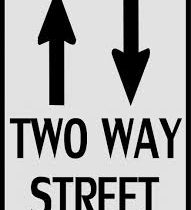While the Internet has opened up a world of business opportunities, it’s also created serious challenges for retaining talented inside sales professionals. In a short time, the average tenure for inside sales employees has shrunk to just 18 months, according to HubSpot.[1] That means you have less than a year and a half before you’re shelling out money to find, hire and train a replacement.
Motivated and experienced inside sales professionals often seek the next career step. (And if they aren’t, you might have a bigger problem on your hands). One approach for dealing with the turnover in sales talent is to simply ignore the problem, pretend it doesn’t exist and hope it leaves you alone.
The opposite approach is to lean into the problem and see it as an opportunity. For the purposes of this article, let’s assume this is the approach you want to take. We’ll discuss the most productive ways to retain your inside sales superstar and how to use their talent to grow your sales team.

Turnover in Sales: Evaluating the Current Landscape
If you haven’t already, it’s time to make a realistic appraisal of the current conditions in the job marketplace that are causing a rising turnover in sales talent:
- By all accounts, the success of inside sales as a strategy has resulted in its meteoric rise in popularity.
- This shift has resulted in a larger pool of experienced people from which to hire.
- The increase in the demand for that pool has far outpaced its increase in size, resulting in a shortage of available talent.
- Hiring Managers are all after the same pool of qualified inside sales professionals, which is shrinking relative to the size of demand.
As a result, experienced talent is in the driver’s seat. Consider them high-demand free agents entertaining two-year contract offers. If you want to keep the best inside sales professional, you’ll have to deliver the strongest offer, and winning these sweepstakes only buys you a year and a half before the clock starts ticking again. Top-performing sales professionals realize they have leverage in the market and use it to their advantage.
Why an Inside Sales Professional Moves On
Inside sales is often seen as a stepping stone position for the top performers in the role. Most fail, quit or succeed and start lobbying for a promotion (either in your company or someone else’s). In any case, they usually don’t stay where they are for long. You can fight this phenomenon or embrace it.
First, you need to know why they’re leaving and what’s most important to them. While compensation is always a concern, there are other factors that motivate sales professionals to switch jobs:
- Lack of Development Opportunities
- Poor Work-Life Balance
- Dissatisfying Work Environment
- Bad Management
- Boredom
Knowing what an inside sales professional is looking for and ensuring your company ticks all the boxes will go a long way toward retaining the best of the best.
How to Improve Retention of Inside Sales Professionals
Retaining talented inside sales professionals begins by hiring the right people from the start. Tap the large pool of inexperienced, untrained talent and filter it down to candidates with the most upside potential AND the most ambition. One of our strategies for meeting the hyper-turnover challenge has been developing an approach that allows us to replace our inside sales talent as quickly as they move up. Our goal is to have a well-oiled machine that enables us to identify, attract, hire and ramp up inside sales staff. Simply stated, we aim to reload, not rebuild.
Tactics for Inside Sales Retention
The inside sales hiring manager’s goal is simple but not easy: Minimize negative turnover when possible and actively promote positive turnover. Following are tactics for retaining your valued sales professionals.
Acknowledge & Move On
Turnover in sales is a fact of the business you’re in, and the best approach is to adapt. You won’t be able to save every employee, but you can reduce the turnover rate.
Present Opportunities for Advancement
Give your recruits something to strive for. Before they’re hired, show them what the career path for top-performing inside sales professionals looks like. The best sales leaders are skilled at painting vivid pictures of a better future. Use this concept to share with inside sales candidates. Trot out your show ponies and share examples of top performers who started in the role you’re looking to fill. Describe how these gunslingers quickly elevated into more prestigious positions with greater earning potential. If you hire a lead gen rep with no aspiration of moving up, you’ve almost definitely hired the wrong person.
Set a Clear Path to Success
Make sure everyone on your team knows what opportunities are available to them at each level of their journey with your company. The progression typically follows this hierarchy:
- Lead Generation
- Inside Sales Closing Role
- Field Closing Role
Your goal is to implement an efficient and effective training process that accommodates the loss of employees with minimal interruption.
Know & Recognize Your Top Performers
Accurately assess the professional trajectory of your top performers. If you acknowledge the growth potential for each of your inside sales professionals, you can capitalize on this resource. Also, don’t wait until their formal performance review to discuss their progress or shortcomings. Regular touch-base meetings can often diffuse dissatisfaction before it results in the loss of a talented inside sales professional.
Stay Current With Inside Sales Hiring Trends
The best of the talent pool will always have their ears open for companies that offer the strongest opportunity to advance. You want that company to be yours. That means you need to know what’s happening in the market before your inside sales team so you can be proactive in heading off employee dissatisfaction:
- What marketing resources are other companies providing to their team that you’re not?
- How often are your top performers being promoted?
- What type of work environment are you fostering?
- What’s the perception of your company’s level of compensation vs. your competitors?
What Makes Great SDRs?
Minimizing turnover in sales begins with hiring the right people out of the gate. This video discusses which personality traits to look for when interviewing candidates for sales development representative (SDR) positions.
We can help you tackle your sales development challenges.
If the forecasts are even close to being accurate, the most critical corporate resource — inside sales talent — is also the one that’s in the shortest supply. Top talent flocks to managers and companies who accelerate — and celebrate — the professional achievements of their people.
Contact us to learn more about our technology recruiting service and how we take on hyper-turnover in sales by offering our people a variety of career fast tracks—both inside and outside our firm.
Frequently Asked Questions About Hyper-Turnover in Inside Sales
Following are answers to some commonly-asked questions about turnover in inside sales. Please contact us for more information.
What Does Inside Sales Do?
Inside sales is a method of managing sales remotely. The job of an inside sales professional is to sell a company’s products or services over the phone, via email or by using other online channels.
What’s the Difference Between Negative and Positive Turnover?
Negative turnover occurs when a valued employee leaves the company and the employer is forced to spend significant sums of money replacing them. Positive turnover is when an unproductive employee exits the business, and the company can fill the position with a more productive sales professional.
What Are the Benefits of Reducing Hyper-Turnover in Inside Sales?
Reducing hyper-turnover in inside sales can bring several benefits to a company, such as:
- Increased Productivity
- Improved Morale and Job Satisfaction
- Lower Recruitment and Training Costs
- Better Customer Relationships
- Increased Revenue and Profits
- More Positive Company Reputation
[1] Prater, Meg, May 20, 2021, The Biggest Threat to Sales Teams in 2021 Isn’t Losing Clients, HubSpot, https://blog.hubspot.com/sales/how-to-manage-a-high-performing-sales-team
Since cofounding memoryBlue in 2002, Chris has helped provide inside sales resources to more than 1,000 high tech companies, and has hired, placed, or evaluated thousands of high tech sales professionals. Chris spearheads memoryBlue recruiting services, and is passionate about developing sales talent that generates results.





